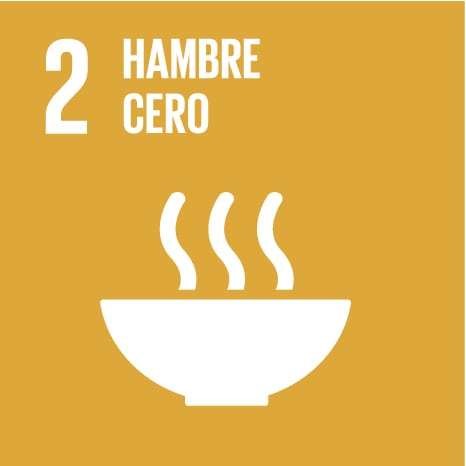
https://www.un.org/sustainabledevelopment/es/hunger/
SDG 2: End hunger, achieve food security and improved nutrition and promote sustainable agriculture
The food and agriculture sector offers key development solutions and is vital for the elimination of hunger and poverty. Properly managed, agriculture, forestry and aquaculture can provide nutritious food for the entire planet, as well as generate decent incomes, support people-centred development in the countryside and protect the environment.
But right now, our soils, oceans, forests and our freshwater and biodiversity are undergoing rapid degradation due to overexploitation.
Added to this is climate change, which impacts on the resources we depend on and increases the risks associated with natural disasters such as droughts and floods. Many peasants can no longer make a living on the land they work, forcing them to migrate to the cities in search of opportunities.
We need a profound reform of the world's food and agriculture system if we are to feed the 815 million hungry people on the planet today and the additional two billion people who will be alive in 2050.
Investments in agriculture are crucial to increase agricultural productive capacity and sustainable food production systems are necessary to help mitigate the challenges of hunger.
Outstanding dataHunger
Food security
|
Goal 2 targets
2.1 By 2030, end hunger and ensure access for all people, in particular the poor and people in vulnerable situations, including infants, to safe, nutritious and sufficient food all year round 2.2 By 2030, end all forms of malnutrition, including by achieving, no later than 2025, the internationally agreed targets on stunting and wasting of children under five, and address the nutritional needs of adolescent girls, pregnant and lactating women and older people 2.3 By 2030, double the agricultural productivity and incomes of small-scale food producers, in particular women, indigenous peoples, family farmers, pastoralists and fisherfolk, including through secure and equitable access to land, other production resources and inputs, knowledge, financial services, markets and opportunities for value addition and off-farm employment generation 2.4 By 2030, ensure the sustainability of food production systems and implement resilient agricultural practices that increase productivity and production, contribute to the maintenance of ecosystems, strengthen resilience to climate change, extreme weather events, droughts, floods and other disasters, and progressively improve soil and land quality 2.5 By 2020, maintain the genetic diversity of seeds, cultivated plants and farmed and domesticated animals and their associated wild species, including through the sound management and diversification of seed and plant banks at national, regional and international levels, and promote access to and fair and equitable sharing of benefits arising from the utilization of genetic resources and traditional knowledge, as internationally agreed 2.a Increase investments, including through enhanced international cooperation, in rural infrastructure, agricultural research and extension services, technology development and plant and livestock gene banks in order to improve agricultural production capacity in developing countries, in particular in the least developed countries 2.b Correct and prevent trade restrictions and distortions in world agricultural markets, including through the parallel elimination of all forms of agricultural export subsidies and all export measures with equivalent effect, in accordance with the mandate of the Doha Round for Development 2.c Take measures to ensure well-functioning food commodity markets and their derivatives and facilitate timely access to market information, including on food stocks, in order to help limit extreme food price volatility
|










